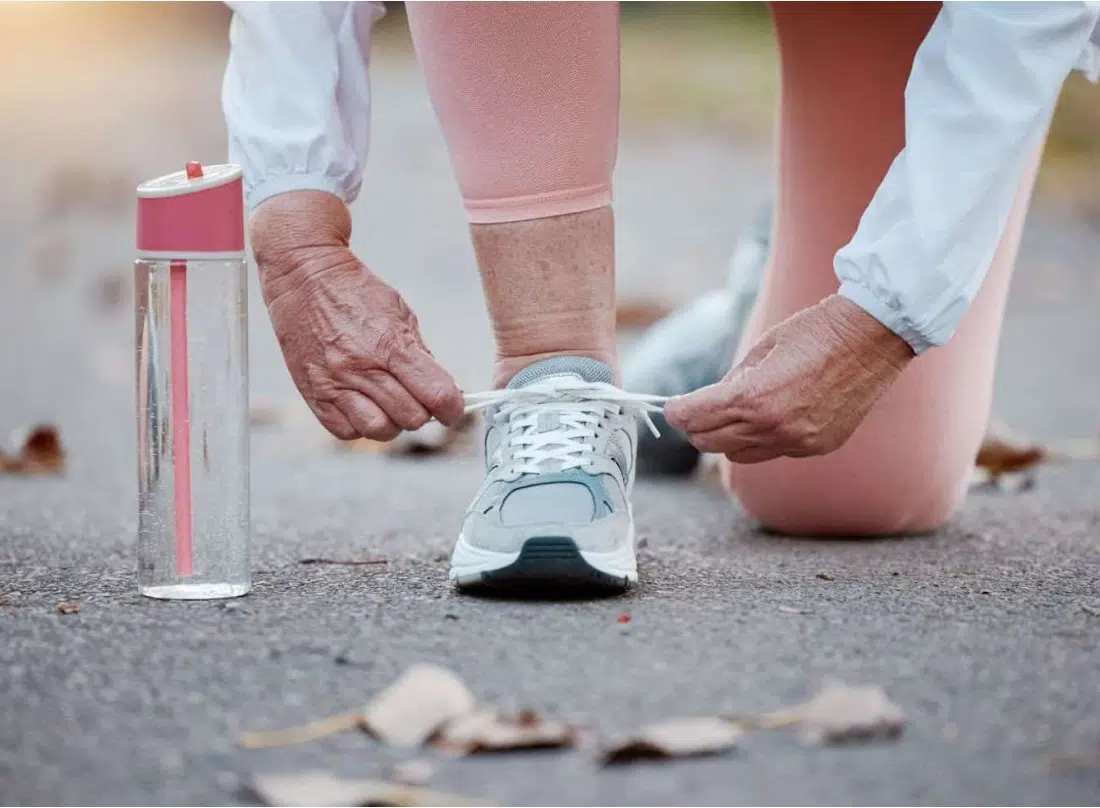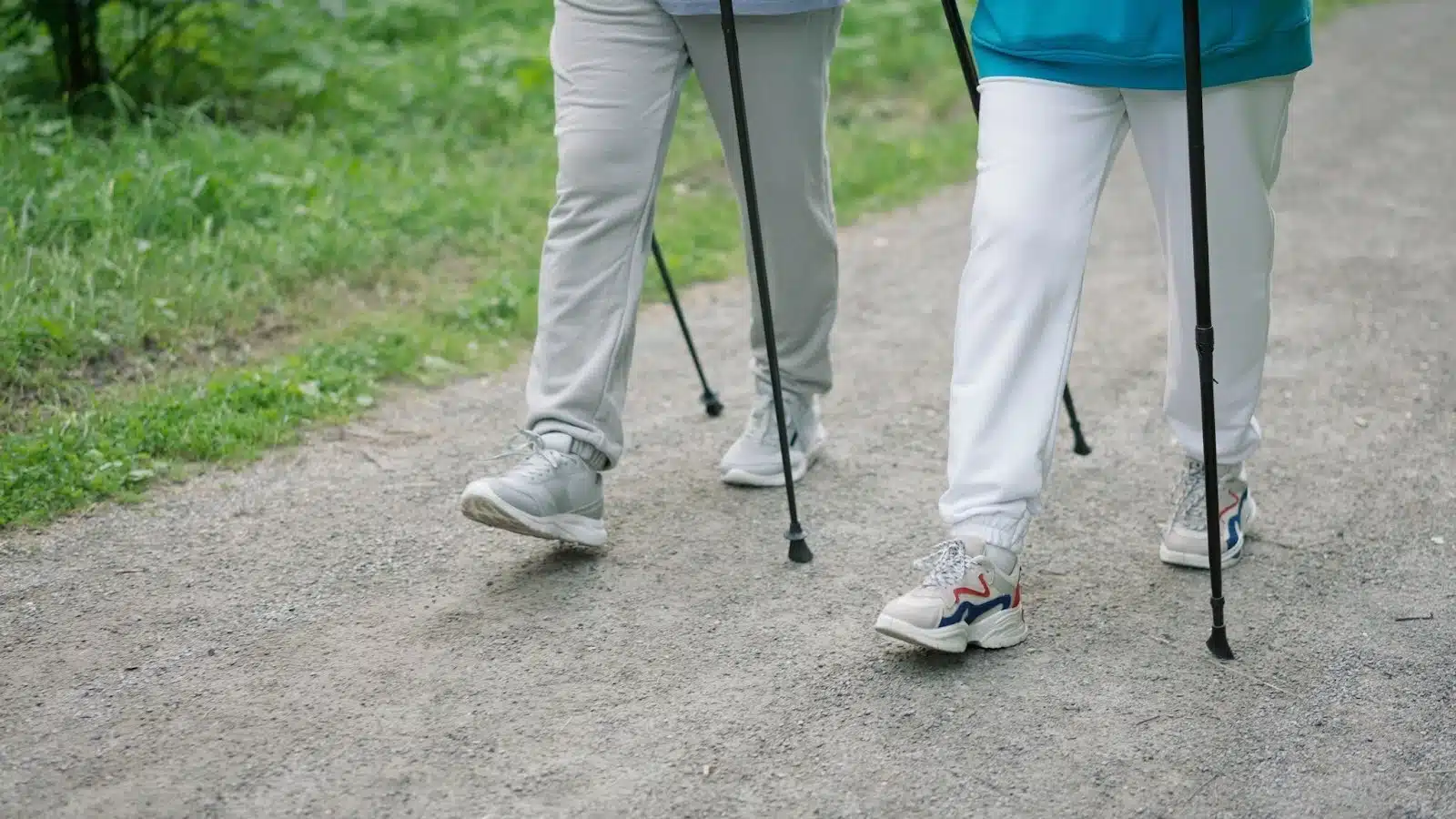Staying active as you age is one of the best ways to maintain overall health, mobility, and independence. Walking is a low-impact exercise that offers numerous benefits for seniors, from improving cardiovascular health to strengthening muscles and reducing the risk of falls. However, choosing the right walking shoes is essential to ensure comfort, support, and safety.
This guide will help you understand the key features to look for in walking shoes, how to select the best pair for your needs, and tips for keeping your footwear in good condition.
Note: Before starting any new exercise, we recommend you consult with your primary healthcare professional first.
Benefits of Walking for Seniors
Walking is one of the simplest and most effective ways for seniors to stay active. It provides a variety of health and wellness benefits that support longevity and independence.
- Improves cardiovascular health: Regular walking can help lower blood pressure, improve circulation, and reduce the risk of heart disease.
- Enhances balance and coordination: Walking strengthens the lower body muscles and improves posture, reducing the risk of falls.
- Supports joint health: Low-impact exercise like walking helps lubricate joints, reducing stiffness and discomfort caused by arthritis.
- Boosts mental well-being: Walking outdoors or in a social setting can help combat stress, anxiety, and depression.
- Promotes better sleep: Regular physical activity can contribute to a more restful sleep pattern.
- Maintains a healthy weight: Walking helps burn calories and supports metabolism, which can prevent weight gain with age.
Key Features to Look for in Walking Shoes
Not all shoes are created equal, and for seniors, comfort and safety should be the top priorities. Here are the key features to look for when shopping for walking shoes:
- Non-slip soles: Shoes should have rubber outsoles with good traction to prevent slips and falls.
- Proper arch support: Arch support helps reduce foot fatigue and prevents common foot problems like plantar fasciitis.
- Cushioned insoles: Shock-absorbing insoles provide comfort and reduce strain on joints.
- Lightweight materials: Heavy shoes can cause unnecessary fatigue; opt for breathable and lightweight designs.
- Wide toe box: A roomy toe area prevents pressure on bunions, corns, and other foot conditions.
- Easy fastenings: Velcro straps or slip-on designs can be more convenient than laces for seniors with mobility or dexterity issues.
While the right shoes can help prevent falls, having access to immediate help is just as important. A Lifeline mobile medical alert system ensures you can get assistance anytime, anywhere—whether at home or on a walk. Stay active with confidence, knowing help is always within reach. Take our Medical Alert Assessment to find the right solution for your needs.
How to Choose the Right Shoes for Your Needs
Finding the right walking shoes requires careful consideration of foot shape, activity level, and any existing health conditions. Here are some steps to help you make the best choice:
1. Understand Your Foot Type
- Flat feet, high arches, and neutral arches require different levels of support.
- A professional foot assessment can help determine the right type of shoe for your needs.
2. Get the Right Fit
- Your feet may change in size as you age, so always measure before purchasing.
- Ensure there is about a thumb’s width of space between your toes and the shoe’s tip.
3. Try on Shoes in the Afternoon
- Feet tend to swell throughout the day, so it’s best to shop in the late afternoon for a more accurate fit.
4. Test for Stability and Comfort
- Walk around in the shoes before purchasing to ensure they feel stable and supportive.
- Avoid shoes that rub or cause discomfort immediately, as they will likely cause blisters or pain over time.
Checklist: How to Measure Your Feet Correctly
- Measure your feet later in the day when they’re slightly swollen
- Stand while measuring to account for weight distribution
- Measure both feet, as one may be larger than the other
- Wear the socks you plan to wear with the shoes
- Use a Brannock device or ask a professional for assistance
Tips for Maintaining Walking Shoes
Proper care can extend the life of your walking shoes and keep them supportive and comfortable.
- Rotate between two pairs: Alternating shoes prevents excessive wear and allows them to dry out properly.
- Keep them clean: Regularly wipe off dirt and debris to maintain grip and traction.
- Replace worn-out insoles: If insoles become flat or lose cushioning, replace them with high-quality inserts.
- Check for wear and tear: Inspect soles for uneven wear, which may indicate it’s time for a new pair.
- Store them properly: Keep shoes in a dry, well-ventilated space to prevent odours and material breakdown.
Incorporating Walking into Your Daily Routine
Making walking a regular part of your routine can improve overall well-being and keep you active in your golden years.
- Start small: Begin with short walks and gradually increase your time and distance.
- Join a walking group: Walking with others provides social interaction and motivation.
- Use a fitness tracker: Track your steps to stay accountable and set goals.
- Walk in safe, well-lit areas: Choose flat surfaces and paths with minimal obstacles.
- Incorporate walking into daily activities: Walk while talking on the phone, take the stairs when possible, or stroll around the neighbourhood after meals.
Keep Moving with Confidence
Walking is a fantastic way to stay active, maintain independence, and boost overall health in your golden years. Choosing the right walking shoes ensures comfort, safety, and support, helping you prevent falls and injuries. By selecting high-quality shoes, maintaining them properly, and making walking a daily habit, you can enjoy the benefits of an active lifestyle for years to come.
What You Should Do Now:
Here are 5 ways we can help you or your loved one live safer and more independently at home as long as possible:
- Get our latest tips, tools and resources straight to your inbox. Sign up for our monthly newsletter.
- Not sure if the time is right for a medical alert service? Take this quick assessment to find out.
- If you would like to learn how to live a healthier and safer lifestyle, go to our blog or visit our resources section, where you can read and download guides.
- Wondering which medical alert system company is the best for your needs? We’ve put together a guide comparing the best medical alert systems for you.



